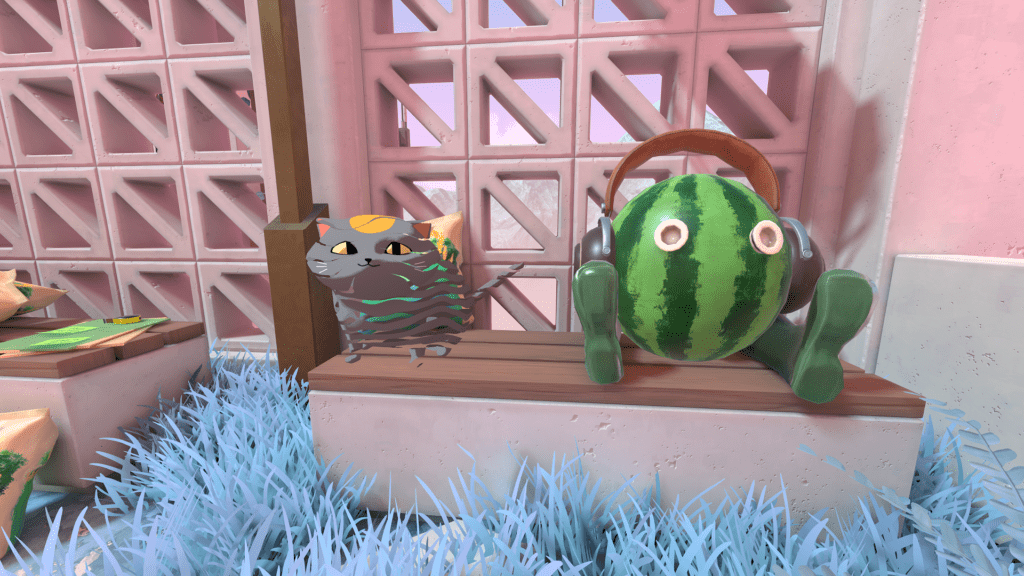Back in 2007, Valve changed the way gamers would visualize a puzzle game. Their smash hit Portal didn’t necessarily start the first-person physics-based puzzle genre, but it certainly set expectations for future attempts. Sixteen years later, many developers have innovated by implementing new and unique ways of altering the world’s physics. Scottish development team Sad Owl Studios’ first title, Viewfinder, aims to redefine our perception of reality through the use of imagery and photographs.
Earth’s Only Hope
Taking place in the distant future, Viewfinder opens to our silent protagonist exploring a previously abandoned virtual reality. This digital world holds the key to revitalizing the earth’s biosphere, which has fizzled down to apocalyptic levels of desolation. Our protagonist is aided by college Jessica, who is controlling the machine from outside of the simulation. An AI cat named Cait also tags along early on, providing the player with more insight into the mysterious synthetic world. Scattered audio recordings of the artificial dimension’s creators can be found throughout Viewfinder’s levels, further building onto the world’s lore.
Falling Flat
Through the discovered audio logs and insight from Cait, the struggles of the original engineers and what would ultimately force them to stop working on the project is slowly unraveled. The end goal is to find the weather disrupter, which is believed to hold the secret to repairing the earth’s climate. While initially intriguing, Viewfinder’s story just feels very tacked on and unfortunately lacks substance. Cait’s constantly commenting on everything and hinting at how to solve puzzles overstayed it’s welcome, despite Cait performing some of the game’s best dialog.
 Reshaping The World
Reshaping The World
What Viewfinder lacks in story, it more than makes up for with its unique gameplay. This digital world allows its inhabitants to bend reality through the use of photography. Any photo taken or found can be held up and placed anywhere in the world. This results in the contents of the two-dimensional photos becoming real 3D objects within the world. The sheer idea is perplexing, to say the least, but Sad Owl Studios was able to perform some developmental gold. 2D photographs can be rotated and placed anywhere, seamlessly conjoining reality. Find a photo of a camera? Place it somewhere and there will now be an actual camera. Or if you find some of the game’s hidden easter eggs, you can play around with those too.
Eased Into Reality
The concept of reshaping reality seems daunting, yet Viewfinder eases players into the core mechanics. Initially, photographs will have to be found. Levels will slowly progress to the point where players are taking photos themselves. Most levels will require accessing reality terminals, which will sometimes need to be powered by batteries. Many of the puzzles involve creative ways to find or duplicate batteries. Each progressing level tends to introduce new reality-shaking abilities, while also mixing up some from earlier levels. This keeps the game feeling fresh, players won’t feel overwhelmed, and it prevents any specific ability from feeling overused and unfun.
 Bend Time, Rewind
Bend Time, Rewind
Don’t be afraid to make mistakes! A nifty rewind feature is caked into the mechanics, which allows players to undo literally anything. Viewfinder isn’t very difficult, as I found myself only stumped on a couple of optional late-game puzzles. The game also felt a bit short, with it only taking about five or six hours to complete. I would have liked to continue exploring new worlds, or even using some of the different abilities more often. That said, Viewfinder encourages replayability and exploration. Each world has a set of hidden objects scattered around for players to find.
Blooming Nature Simulation
The synthetic artificial world within Viewfinder is vibrant and full of life. The hub world, which bridges together the game’s 5 locations, contains lush pieces of time’s past. Those range from normalities like rain to more unusual occurrences like purple plants in addition to floating palm trees. Occasionally, Viewfinder’s art style will change to fit the style of found photographs. For example, paintings will look like fresh oil on a canvas, while photocopied photos will be grayscale. Each location is accompanied by an ambient music track playing against the sounds of nature. While this sound direction does add a layer of depth to Viewfinder’s world, making it feel more alive, it also leaves a bit to be desired. It’s not that the music is bad, or off-putting, it’s just easily forgettable.
 A Thunderful Time
A Thunderful Time
Viewfinder managed to make its mark on the first-person puzzle genre. The core gameplay hook of shifting reality via photography is incredibly well implemented. This results in an incredibly fun experience from start to finish. That’s not to say it’s entirely smooth sailing, as the narrative structure falls flat in its performance, despite the initial peak of curiosity. The game could have also used a bit of a difficulty boost, something that perhaps could be rectified through DLC challenge maps. Sad Owl Studios have created something that truly stands out, in a post Portal 2, The Talos Principle, and The Witness world.
Viewfinder is available now on PlayStation 5 and PC. For more on Viewfinder, check out Frank’s Video Review. For more first-person puzzle-solving goodness, check out our review of Manifold Garden.
A copy of Viewfinder was provided for the purpose of this review.





